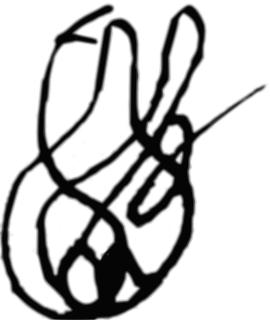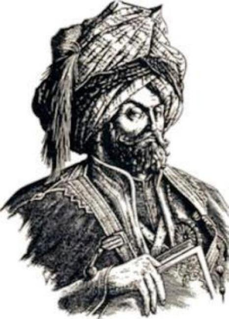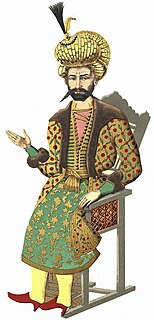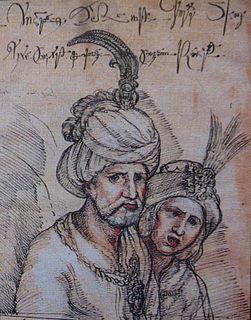 W
WReza Abbasi, Riza yi-Abbasi or Reza-e Abbasi, رضا عباسی in Persian, usually Reza Abbasi also Aqa Reza or Āqā Riżā Kāshānī was the leading Persian miniaturist of the Isfahan School during the later Safavid period, spending most of his career working for Shah Abbas I. He is considered to be the last great master of the Persian miniature, best known for his single miniatures for muraqqa or albums, especially single figures of beautiful youths.
 W
WAlexander II of the Bagrationi Dynasty, was a king of Kakheti in eastern Georgia from 1574 to 1605. In spite of a precarious international situation, he managed to retain relative economic stability in his kingdom and tried to establish contacts with the Tsardom of Russia. Alexander fell victim to the Iran-sponsored coup led by his own son, Constantine I.
 W
WAlireza Abbassi Tabrizi was a prominent Iranian calligrapher and calligraphy teacher. He was titled by Abbas I as Šāhnavāz Xān. Abbassi was a master of Naskh and Thuluth scripts and the initiator of his own style of Nastaʿlīq script. Besides he was an expert of various other scripts like Muhaqqaq, Reqa, Reyhan, Tevki and Taʿlīq scripts.
 W
WAllahverdi Khan was an Iranian general and statesman of Georgian origin who, initially a gholām, rose to high office in the Safavid state.
 W
WAbu'l Ghazi Sultan Alqas Mirza, better known as Alqas Mirza (15 March 1516 – 9 April 1550), was a Safavid prince and the second son of king (shah) Ismail I. In early 1546, with Ottoman help, he staged a revolt against his brother Tahmasp I, who was king at the time.
 W
WArakel Davrizhetsi or Arakel of Tabriz - Առաքել Դավրիժեցի (1590s–1670) was a 17th-century Armenian historian, born in Tabriz. In 1636 he was the custodian of the Hovhannavank Monastery, which he left to go to Echmiadzin. The adjective Davrizhetsi points to Davrezh, Armenian for Tabriz.
 W
WBaba Shah Isfahani, also known as Baba Shah Araghi, was the most famous Iranian calligrapher in the 16th century and the most prominent calligrapher of Nastaliq script in the era of Tahmasp I. He was titled as Reyis or-Roassa. His calligraphy teacher was Ahmad Mashhadi. In 1588, when he was young, he ravelled to Iraq. He was killed in Baghdad and was buried in this city. His works date back from 1569 until 1586.
 W
WBagrat VII (1569–1619), also known as Bagrat Khan, was King of Kartli, eastern Georgia, effectively serving as a khan for the Persian shah Abbas I from 1615/1616 to 1619.
 W
WBahāʾ al‐Dīn Muḥammad ibn Ḥusayn al‐ʿĀmilī was an Arab Iranian Shia Islamic scholar, philosopher, architect, mathematician, astronomer and poet who lived in the late 16th and early 17th centuries in Safavid Iran. He was born in Baalbek, Ottoman Syria but immigrated in his childhood to Safavid Iran with the rest of his family. He was one of the earliest astronomers in the Islamic world to suggest the possibility of the Earth's movement prior to the spread of the Copernican theory. He is considered one of the main co-founders of Isfahan School of Islamic Philosophy. In later years he became one of the teachers of Mulla Sadra.
 W
WKamāl ud-Dīn Behzād, also known as Kamal al-din Bihzad or Kamaleddin Behzad, was a Persian painter and head of the royal ateliers in Herat and Tabriz during the late Timurid and early Safavid Persian periods. He was very prominent in his role as a director of a workshop in the Herat Academy as well as his position in the Royal Library in the city of Herat. His art is unique in that it includes the common geometric attributes of Persian painting, while also inserting his own style, such as vast empty spaces to which the subject of the painting dances around. His art includes masterful use of value and individuality of character, with one of his most famous pieces being "The Seduction of Yusuf”' from Sa'di's Bustan of 1488. Behzād’s fame and renown in his lifetime inspired many during, and after, his life to copy his style and works due to the wide praise they received. Due to the great number of copies and difficulty with tracing origin of works, there is a large amount of contemporary work into proper attribution.
 W
WSharaf al-Din Khan b. Shams al-Din b. Sharaf Beg Bedlisi was a medieval Kurdish Emir of the Emirate of Bitlis. But he is more known as a historian, writer and poet. He wrote exclusively in Persian. Born in the Garmrood village, in central Iran, between Arak and Qom, at a young age he was sent to the Safavid's court and obtained his education there.
 W
WDavid X (1482–1526) was a king of the Georgian kingdom of Kartli from 1505 to 1525.
 W
WDavid XI or Dāwūd Khan II was King of Kartli. A convert to Islam, he was appointed as Khan of Kartli by the Persian Shah Tahmasp I from 1562 to 1578.
 W
WGanj Ali Khan was a military officer in Safavid Iran of Kurdish origin, who served as governor in various provinces and was known for his loyal service to king (shah) Abbas I. Ganj Ali Khan continuously aided the shah on almost all of his military campaigns until his own death in 1624/5. He was also a great builder, the Ganjali Khan Complex being one of his finest achievements.
 W
WGeorge X, of the Bagrationi royal dynasty, was a king of the eastern Georgian kingdom of Kartli from 1599 until his death.
 W
WMir Emad is perhaps the most celebrated Persian calligrapher. He was born in Qazvin, Iran. It is believed that the Nastaʿlīq style reached its highest elegance in Mir Emad's works. These are amongst the finest specimens of Nastaʿlīq calligraphy and are kept in several museums in the world.
 W
WHossein Ali Beg Bayat was a Safavid diplomat from the Turkoman Bayat clan, who served as the ambassador to the Holy Roman Empire, the Russian Tsardom, Habsburg Spain and several other royal and noble courts during the reign of king Abbas I, and was part of the first Safavid embassy to Europe.
 W
WPrince Ibrahim Mirza, Solṭān Ebrāhīm Mīrzā, in full Abu'l Fat'h Sultan Ibrahim Mirza was a Persian prince of the Safavid dynasty, who was a favourite of his uncle and father-in-law Shah Tahmasp I. He is now mainly remembered as a patron of the arts, especially the Persian miniature. Although most of his library and art collection was apparently destroyed by his wife after his murder, surviving works commissioned by him include the manuscript of the Haft Awrang of the poet Jami which is now in the Freer Gallery of Art in Washington D.C.
 W
WAli Akbar Isfahani was a 17th-century Persian architect of the Safavid era. He is best known for the Shah Mosque commissioned by Shah Abbas and built in 1611–1631. His name appears in an inscription in the mosque above the doorway of the entrance iwan complex of the mosque.
 W
WUruch Beg, later known by his baptized name of Don Juan (1560–1604) was a late 16th and early 17th century Iranian figure in Iran and Spain. He is also known as Faisal Nazary. A native of Iran, and from the Bayat Qizilbash clan, he later moved westward, settled in Spain, and became a Roman Catholic. There he wrote an account of Iran, his involvement there with Shah Abbas I, and his journey to Spain in the Persian embassy to Europe (1599-1602). He was killed in 1604 during a street fight.
 W
WSayyed Ala al-Din Hoseyn, better known as Khalifeh Soltan, and also known as Sultan al-Ulama (سلطانالعلماء), was an Iranian statesman and cleric, who served as the grand vizier of the Safavid king (shah) Abbas I, the latter's grandson Safi, and Abbas II.
 W
WLevan also known as Leon (1503–1574), of the Bagrationi Dynasty, was a king of Kakheti in eastern Georgia from 1518/1520 to 1574. He presided over the most prosperous and peaceful period in the history of the Kingdom of Kakheti.
 W
WMehdi Qoli Beg was a Chagatai ruler in Khorasan and a courtier at the court of Shah Abbas I of Safavid dynasty. He was named Amir-e Akhour and was sent on a diplomatic mission to Tsardom of Russia and Holy Roman Empire.
 W
WAqa Mirak was a Persian illustrator and painter.
 W
WMirza Salman Jaberi Isfahani was a prominent Persian statesman in Safavid Iran, who served as the grand vizier of Ismail II and Mohammad Khodabanda.
 W
WPari Khan Khanum was a Safavid princess, the daughter of the Safavid king (shah) Tahmasp I and his Circassian consort, Sultan-Agha Khanum. An influential figure in the Safavid state, Pari Khan Khanum was well educated and knowledgeable in traditional Islamic sciences such as jurisprudence, and was an accomplished poet.
 W
WQovsi Tabrizi was an Iranian poet of the 17th century.
 W
WRostom or Rustam Khan was a Georgian royal, from the House of Bagrationi, who functioned as a Safavid-appointed vali /king of Kartli, eastern Georgia, from 1633 until his death.
 W
WTeresa Sampsonia was a noblewoman of the Safavid Empire of Iran. She was the wife of Elizabethan English adventurer Robert Shirley, whom she accompanied on his travels and embassies across Europe in the name of the Safavid King (Shah) Abbas the Great.
 W
WMirza Mohammad Taqi, better known as Saru Taqi was a eunuch of Safavid Empire, who served as the Grand Vizier of the Safavid king (shah) Safi and the latter's son Abbas II until he was assassinated on 11 October 1645.
 W
WSultan-Agha Khanum was a Safavid queen consort of Circassian origin, as the second wife of Safavid king Tahmasp I. She married Tahmasp I sometime before 1548, and was the sister of the Safavid-Circassian noble Shamkhal Sultan, as well as the mother of princess Pari Khan Khanum and prince Suleiman Mirza.
 W
WTajlu Khanum, also known by her title of Shah-Begi Khanum, was a Turcoman princess from the Mawsillu tribe and principal consort of Ismail I.
 W
WTeimuraz I (1589–1661), of the Bagrationi Dynasty, was a Georgian monarch who ruled, with intermissions, as King of Kakheti from 1605 to 1648 and also of Kartli from 1625 to 1633. The eldest son of David I and Ketevan, Teimuraz spent most of his childhood at the court of Shah of Iran, where he came to be known as Tahmuras Khan. He was made king of Kakheti following a revolt against his reigning uncle, Constantine I, in 1605. From 1614 on, he waged a five-decade long struggle against the Safavid Iranian domination of Georgia in the course of which he lost several members of his family and ended up his life as the shah's prisoner at Astarabad at the age of 74.
 W
WKamal al-din or Shams al-din Mohammad, known by his pen name Vahshi Bafqi was a Persian poet of the Safavid period. Vahshi was born in the agricultural town of Bafq, southeast of the city of Yazd.